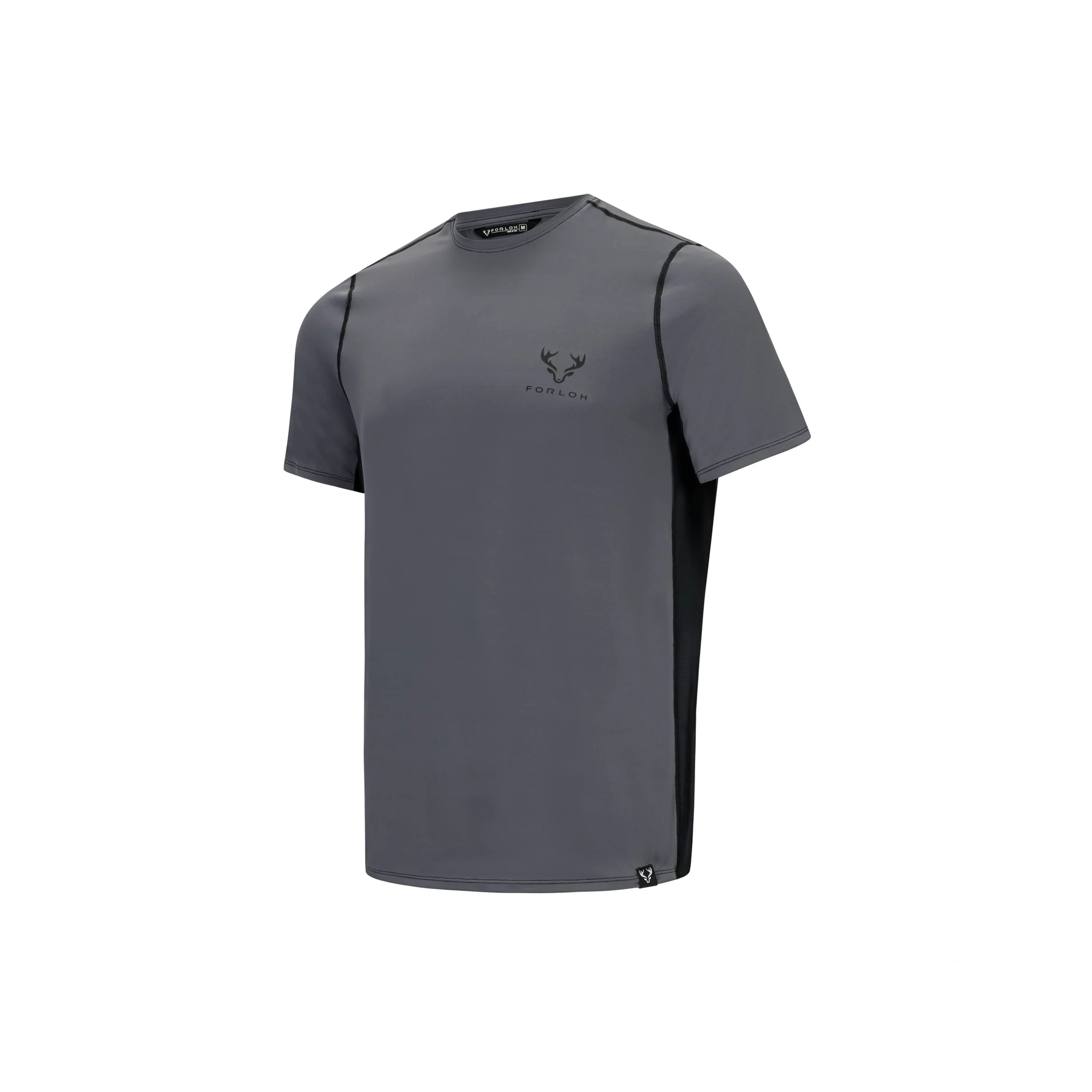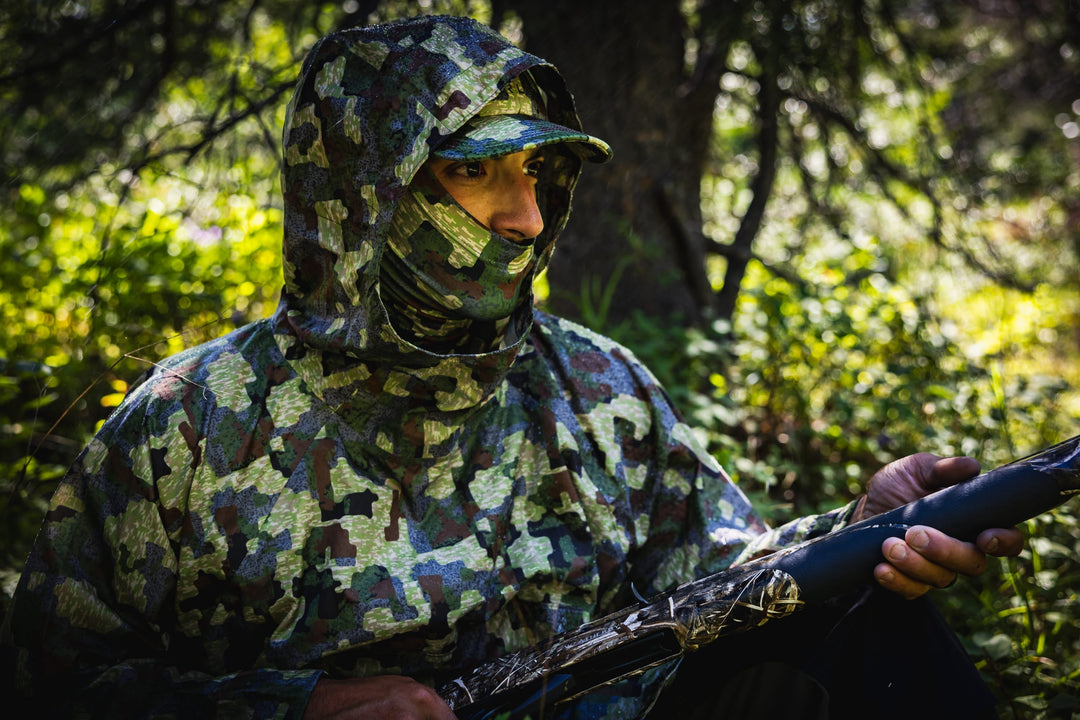-By Dirk van As, climate scientist at Greenland Guidance
Greenland is a great place for keeping tabs on our climate system. It is located in the far north where temperatures are increasing faster than elsewhere on our planet. Greenland is particularly interesting because of its enormous, 2-mile thick ice sheet - the size of 9 average-sized US states such as Nebraska or South Dekota. If melted, the ice sheet would raise global sea levels by 7 meters, causing billions of dollars worth of trouble for many inhabited coastal areas inside and outside the US.
"With FORLOH caring about all things related to the outdoors and nature, the company started investing in Greenland climate science in 2021."

Pictured: Diagram of the feedback loop causing enhanced warming in the Arctic.
What Happens In The Arctic Doesn’t Stay In The Arctic
But first, let’s take a step back. Why is atmospheric warming so much more pronounced at high latitudes? Arctic temperatures are increasing at more than double the rate of the global average. Amplified Arctic warming is primarily the result of a powerful feedback loop: higher air temperatures melt snow and ice faster, making the bright Arctic surfaces darker due to for instance snow grain metamorphism and sea ice disappearance, which leads to more sunshine getting absorbed, and consequently to further warming. This feedback mechanism can cause a runaway process if a so-called “tipping point”, a threshold temperature, gets passed. Such a process is exactly what climate scientists everywhere want to avoid, also those behind the famous reports by the Intergovernmental Panel on Climate Change, by reducing greenhouse gas emissions. Because what happens in the Arctic doesn’t stay in the Arctic. Changes there are noticed everywhere.
Google map showing the locations of the FORLOH-sponsored glacier monitoring sites in Greenland.Canary In The Coalmine
A problem that polar scientists are faced with is that direct observations of glaciers and ice sheets are relatively sparse. Yes, there are several dozens of measurement locations keeping track of ice melt and more, but considering the large extent of the polar regions measurement sites are few. Nowadays satellites and climate models can provide a lot of detail on a multitude of aspects of the polar regions, but there is no substitute for on the ground, in situ observations. With this in mind, FORLOH embarked on a mission to increase the number of measurement sites in support of climate science. Together with scientists from Greenland Guidance they chose the southern part of the Greenland ice sheet as their study area. Not only does this part of the ice sheet function as a canary in a coalmine - what happens there now is expected to happen further north in the future - but also there are Danish, Swiss and other research groups to collaborate with in the region, increasing the impact of the Forloh-sponsored monitoring efforts.

Pictured: A draw wire ice ablation tracker, measuring glacier melt and motion. A wire running down from the instrument box is drilled into the glacier; as the ice surface melts down, the wire coils up in the box, which reflects directly how much ice has melted.
"Last year in late August (which is already towards the end of the short Greenland summer), we installed three draw wire ice ablation trackers (DWIATs)."
These instruments were developed to study the two most important mass loss processes for the Greenland ice sheet: how fast the ice melts, and how fast the ice flows to the sea. We chose three sites with different characteristics to be able to study dissimilarities in climate impacts. Site 1 is right next to a moulin - a meltwater drainage hole running straight through the ice sheet. Site 2 is on the fast-flowing glacier with complicated name Eqalorutsit Kangilliit Sermiat; this glacier calves icebergs into the fjord. Site 3 is on a much slower glacier named Nordbogletsjer, and provides historically important context as the site was also monitored four decades ago. The instruments transmit their measurements via satellite link, so we can already now study their data, without having returned to the sites since installation.

Pictured: The FORLOH 1 measurement site seen from above, with the DWIAT instrument in between helicopter and moulin (meltwater drainage hole).
For the measurements of ice melt (or more precisely “ablation”), we are eagerly awaiting what will happen during the peak of the melt season in July and August. In the below graph you can see that at the FORLOH 3 site, 56 cm (22 inches) of glacier ice melted in 2021 right after we installed the instrument. Then no ice melt happened for 9 months, as the site and instrument got covered in a thick layer of winter snow. After the snow had melted off by mid-June, ice melt picked up again. So far, by early July, net ablation at this site added up to 85 cm (33 inches). But the peak melting hasn’t even started yet; there is much more melt to come. After this summer, it will be exciting to compare the first value of annual net ablation for the FORLOH 3 site to the historical measurements taken four decades ago.

Pictured: Graph showing surface height change due to melting and temperature measured inside the instrument box (sensitive to solar heating) at the FORLOH 3 site.
Single Weather Events Noticeably Impact The Ice Sheet
The second important measurement we mentioned, that of ice flow velocities, is done in the instrument boxes using repeat GPS localization. The glaciers flow from high to low elevations year-round, as gravity urges the ice towards the fjords. But there is a distinct speedup as soon as melting kicks in, because meltwater runs to the glacier bed through cracks and moulins, making the glacier bed wet and slippery, causing the glacier to lose its footing, so to say.
"This is a major area of interest to glaciologists, because it is hard to predict what exactly will happen to the ice flow when more melting occurs during longer melt seasons in a future warming climate."
Although our time series are still too short to reveal an annual cycle in velocity, the data in the velocity graph below do show summer acceleration at all three sites. At “slowest” site 1 with an average velocity of 46 m per year we even measured a 60% speedup, perhaps related to the fact that the instrument is next to a moulin through which meltwater reaches the bedrock efficiently. The other two sites have been accelerating since the project started. We suspect that for site 3 this is part of the annual cycle, whereas for site 2, where ice velocity is 10-20 times higher (1120 m per year on average), it is likely due to the instrument moving into a region with faster ice flow; we will know after gathering more data. But already now we can identify some really interesting variability in velocity at all sites. This could for instance be related to the glaciers’ caterpillar-like motion, but in the case of the late November 2021 acceleration we are convinced this is due to a massive amount of rainwater falling from the skies, making its way to the bedrock and enhancing glacial sliding. It is spectacular to discover how impactful single weather events can be for something as large as the Greenland ice sheet.

Pictured: Graph showing the velocity at which the ice moves at the three measurement locations. Note that the plotted velocities at the FORLOH 2 site, on a fast-moving glacier, are reduced by 1000 m/y for viewing convenience.
FORLOH Instruments Give Us Real-Time Insights Into What Is Happening
As mentioned, the DWIATs’ data are transmitted to the office via satellite, giving us near real-time insights into what is happening. You are more than welcome to have a look at the data at https://greenlandguidance.com/measurements/data/forloh/. Besides the steady flow of measurements in the online data portal, you may notice one or two data gaps; those seemingly missing data are sitting safely in the instruments’ loggers (computers) awaiting the next data readout in the field. Considering the extreme conditions the instruments are enduring, such as powerful storms, temperatures far below freezing, countless thaw/freeze cycles, static electricity from wind-blown snow, winters without solar charging, and huge downward forces from compacting snow, the success rate of the Forloh instruments has been pretty high.
If you’re a scientist (or student or teacher or just someone with an interest in glacier data), we can send you a batch of raw or processed data for you to plug into your research. And importantly, after each melt season we’ll upload the data to the servers of the Programme for Monitoring of the Greenland Ice Sheet (PROMICE) where scientists can download all sorts of important glaciological data and use them for generations to come.
Related: FORLOH On Climate Change
About the Author: Dirk van As studied meteorology and physical oceanography in Utrecht, The Netherlands. He focussed on the Antarctic ice sheet as a PhD student, before turning his attention to the Greenland ice sheet in 2007 as a senior researcher at the Geological Survey of Denmark and Greenland. Here he helped design and build a large measurement network monitoring the ice sheet. In 2018 Dirk started his own science and logistics support company Greenland Guidance. Dirk is an outspoken advocate of the need to reverse human-induced climate change, urging governments to act on scientific evidence and without further delay.








